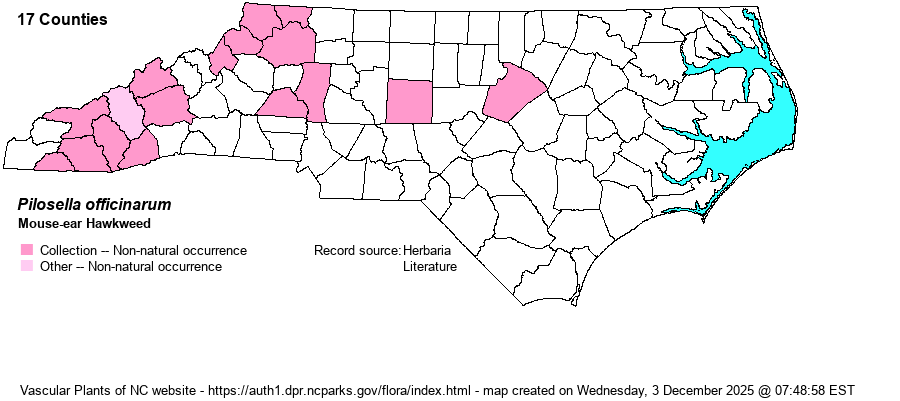Show/Hide Synonym
| taxonName | relationship | relatedTaxonName | relatedTaxonRefText | relComments |
|---|
|
| Pilosella officinarum | = | Hieracium pilosella | Gleason and Cronquist (1991) | | | Pilosella officinarum | = | Hieracium pilosella | Flora of North America (1993b, 1997, 2000, 2002a, 2002b, 2003a, 2004b, 2005, 2006a, 2006b, 2006c, 2007a, 2009, 2010) | | | Pilosella officinarum | = | Hieracium pilosella | Gleason (1952) | | | Pilosella officinarum | = | Hieracium pilosella | | | | Pilosella officinarum | = | Hieracium pilosella | Radford, Ahles, and Bell (1968) | | | Pilosella officinarum | = | Hieracium pilosella | Vascular Flora of the Southeastern States (Cronquist 1980, Isely 1990) | | | Pilosella officinarum | = | Hieracium pilosella | | | | Pilosella officinarum | = | Hieracium pilosella | Flora of Virginia | | | Pilosella officinarum | = | Hieracium pilosella | Wofford (1989) | | | Pilosella officinarum | > | Hieracium pilosella var. pilosella | Fernald (1950) | | | Pilosella officinarum | > | Hieracium pilosella var. pilosella | Kartesz (1999) | | | Pilosella officinarum | > | Hieracium pilosella var. pilosella | Flora of West Virginia | | | Source: Weakley's Flora |
|

